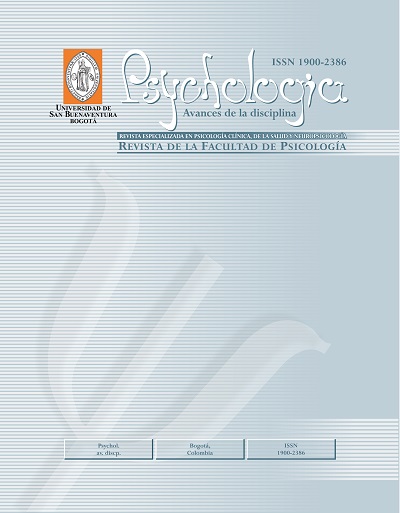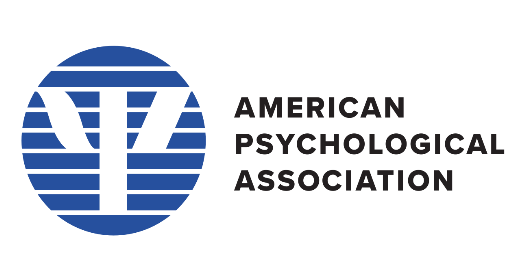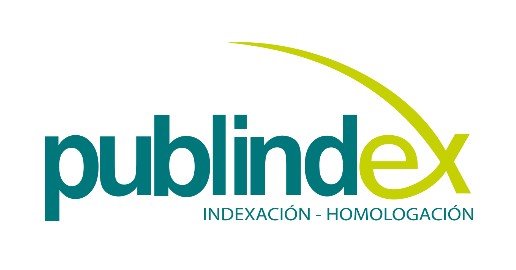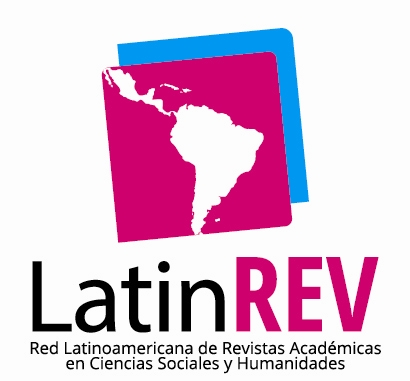View/Download
How to Cite
Chahín-Pinzón, N., Reyes Jaimes, J. M., & Vargas Parra, J. (2017). Psychological aspects to consider when attending victims of human trafficking. Psychologia, 11(2), 121–129. https://doi.org/10.21500/19002386.3107
More Citation Formats
License terms
▼
This journal provides open, immediate access to its contents, based on the principle that offering the public free access to research helps to promote a higher global exchange of knowledge.
As such, all journal articles are published under a Creative Commons Attribution-NonCommercial-ShareAlike 4.0 International License (CC BY-NC-SA), by which commercial use of the original work or its possible derived works is not allowed, and the distribution thereof must be done with the same license elements regulating the original work.
http://creativecommons.org/licenses/by-nc-sa/4.0/
Abstract
This article describes the basic psychological elements to mental health professionals who at some point must attend victims of human trafficking. To achieve this goal, the content will be developed at various levels of approach to this problem. The content will be developed at various levels. First, the global situation of human trafficking will be addressed. Second, the psychological damage in victims will be analyzed. Third, the most frequent mental disorders that they suffer will be described. And finally new diagnostic proposals will be reviewed in order to describe the particular symptoms in these victims. In the final part, a critical reflection of the current problem is made. Subsequently some alternatives are proposed, in order to provide better care of the victims of human trafficking.
Keywords:
References
Abas, M., Ostrovschi, N. V., Prince, M., Gorceag, V. I., Trigub, C., & Oram, S. (2013). Risk factors for mental disorders in women survivors of human trafficking: A historical cohort study. BMC Psychiatry, 13, 1–11.
Acevedo A. M. (2014). Trata de personas: una moderna forma de esclavitud. Tesis: Universidad Militar Nueva Granada.
Alexander, M. P., Kellogg, N. D., & Thompson, P. (2005). Community and mental health support of juvenile victims of prostitution. Medical, legal and social science aspects of child sexual exploitation, 1, 397-421.
Alexander, M. P., Kellogg, N. D., & Thompson, P. (2005). Community and mental health support of juvenile victims of prostitution. Medical, legal and social science aspects of child sexual exploitation, 1, 397-421.
American Psychiatric Association. (2013). Diagnostic and statistical manual of mental disorders (5th ed.). Arlington, VA: Author.
American Psychological Association. (2014). Report of the Task Force on Trafficking of Women and Girls. Washington DC: APA.
Barrows, J., & Finger, R. (2008). Human trafficking and the healthcare professional. Southern medical journal, 101(5), 521-524.
Bernal, M. M. (2010). Modelos de atención dirigidos a mujeres en situación de trata de personas: una lectura crítica desde la perspectiva de género. Tesis de maestría: Universidad Nacional de Colombia.
Bezpalcha, R. (2003). Helping Survivors of Human Trafficking.
Burnette, M. L., Lucas, E., Ilgen, M., Frayne, S. M., Mayo, J., & Weitlauf, J. C. (2008). Prevalence and health correlates of prostitution among patients entering treatment for substance use disorders. Archives of General Psychiatry, 65, 337-344.
Cantor, C., & Price, J. (2007). Traumatic entrapment, appeasement and complex post-traumatic stress disorder: Evolutionary perspectives of hostage reactions, domestic abuse and the Stockholm Syndrome. Australian and New Zealand Journal of Psychiatry, 41, 377-384.
Chahín-Pinzón, N. (2013). Adaptación de dos instrumentos para niños colombianos: la escala Barratt de impulsividad (BIS-11C) y el cuestionario de agresividad de Buss y Perry (AQ). Tesis doctoral: Universitat Rovira i Virgili.
Chahín-Pinzón, N. (2014). Aspectos a tener en cuenta cuando se realiza una adaptación de test entre diferentes culturas. Psychologia. Avances de la disciplina, 8(2), 109-112.
Chahín-Pinzón, N., & Briñez, B. (2011). Consumo de sustancias psicoactivas y maltrato infantil. Análisis, 8, 13-22.
Chahín-Pinzón, N., & Briñez, B. L. (2015). Propiedades psicométricas de la Escala de Ideología de Género en adolescentes colombianos. Universitas Psychologica, 14(1), 15-23.
Chahín–Pinzón, N., &. Briñez, B. (2016). Propiedades psicométricas del Cuestionario de Adicción a Internet y Videojuegos para Adolescentes. Universitas Psychologica, 15 (4), 10-25.
Chiarotti, S. (2003). La trata de mujeres: sus conexiones y desconexiones con la migración y los derechos humanos. Inter-American Development Bank.
Choi, H., Klein, C., Shin M-S., & Lee, H-J. (2009). Posttraumatic stress disorder (PTSD) and disorders of extreme stress (DESNOS) symptoms following prostitution and childhood abuse. Violence Against Women, 15, 933-951.
Clawson, H. J., Small, K. M., Go, E. S., & Myles, B. W. (2003). Needs assessment for service providers and trafficking victims. National Institute of Justice, U.S.
Courtois, C. A. (2004). Complex trauma, complex reactions: Assessment and treatment. Psychotherapy: Theory, Research, Practice, Training, 41, 412-425.
Cwikel, J., Chudakov, B., Paikin, M., Agmon, K., & Belmaker, R. H. (2004). Trafficked female sex workers awaiting deportation: comparison with brothel workers. Archives of women's mental health, 7(4), 243-249.
Deb, S., Mukherjee, A., & Mathews, B. (2011). Aggression in sexually abused trafficked girls and efficacy of intervention. Journal of Interpersonal Violence, 26, 745-768.
Dovydaitis, T. (2010). Human trafficking: the role of the health care provider. Journal of Midwifery & Women’s Health, 55(5), 462-467.
Dutton, D. G., & Painter, S. (1993). Emotional attachments in abusive relationships: A test of traumatic bonding theory. Violence and Victims, 8, 105-120.
Echeburúa, E., De Corral, P., & Amor, P. J. (2002). Evaluación del daño psicológico en las víctimas de delitos violentos. Psicothema, 14(Suplemento), 139-146.
Farley, M., Cotton, A., Lynne, J., Zumbeck, S., Spiwak, F., Reyes, M. E., ... & Sezgin, U. (2004). Prostitution and trafficking in nine countries: An update on violence and posttraumatic stress disorder. Journal of trauma practice, 2(3-4), 33-74.
Fleisher, M., Johnston, R., & Alon, I. (2008). Human trafficking in eastern Africa: research assessment and baseline information in Tanzania, Kenya, Uganda, and Burundi. Geneva: International Organization for Migration.
Herman, J. (1997). Trauma and recovery: The aftermath of violence from domestic abuse to political terror. New York, NY: Basic Books.
Herman, J. L. (1992). Complex PTSD: A syndrome in survivors of prolonged and repeated trauma. Journal of traumatic stress, 5(3), 377-391.
Hossain, M., Zimmerman, C., Abas, M., Light, M., & Watts, C. (2010). The relationship of trauma to mental disorders among trafficked and sexually exploited girls and women. American Journal of Public Health, 100, 2442-2449.
Hughes, D. M. (2014). Trafficking in Human Beings in the European Union: Gender, Sexual Exploitation, and Digital Communication Technologies. SAGE Open 4(4).
Kilpatrick, D. G., Saunders, B. E., Amick-McMullan, A., Best, C. L., Veronen, L. J., & Resnick, H. S. (1989). Victim and crime factors associated with the development of crime-related post-traumatic stress disorder. Behavior Therapy, 20(2), 199-214.
King, Gilbert (2004) Woman, child for sale: The new slave trade in the 21th century. New York: Chamberlain Bross.
Luxenberg, T., Spinazzola, J., & van der Kolk, B. A. (2001). Complex trauma and disorders of extreme stress (DESNOS) diagnosis. Part 1: Assessment. Directions in Psychiatry, 21(25), 373-392.
Magliano, M. J., & Clavijo, J. (2011). La trata de persona en la agenda política sudamericana sobre migraciones: La securitización del debate migratorio. Análisis político, 24(71), 149-163.
Miller, E., Decker, M. R., Silverman, J. G., & Raj, A. (2007). Migration, sexual exploitation, and women's health: a case report from a community health center. Violence Against Women, 13(5), 486-497.
Mizus, M., Moody, M., Privado, C., & Douglas, C. A. (2003). Germany, U.S. receive most sex-trafficked women. Off Our Backs, 33(7/8), 4.
Montenegro, V., & Fontaine, G. (2014). La lucha contra la trata de personas en Colombia (2008-2013): una política sin acabar. URVIO-Revista Latinoamericana de Estudios de Seguridad, (14), 12-27.
Namnyak, M., Tufton, N., Szekely, R., Toal, M., Worboys, S., & Sampson, E. L. (2008). ‘Stockholm syndrome’: psychiatric diagnosis or urban myth?. Acta Psychiatrica Scandinavica, 117(1), 4-11.
Oram, S., Stöckl, H., Busza, J., Howard, L. M., & Zimmerman, C. (2012). Prevalence and risk of violence and the physical, mental, and sexual health problems associated with human trafficking: systematic review. PLoS Med, 9(5), e1001224.
Organización de las Naciones Unidas (2000). Protocolo para prevenir, reprimir y sancionar la trata de personas, especialmente mujeres y niños, que complementa la Convención de las Naciones Unidas contra la Delincuencia Organizada Transnacional. Asamblea General, resolución 55/25.
Ostrovschi, N., Prince, M., Zimmerman, C., Hotineanu, M., Gorceag, L. T., Gorceag, V. I., et al. (2011). Women in post-trafficking services in Moldova: diagnostic interviews over two time periods to assess returning women’s mental health. BMC Public Health, 11(1), 232
Pelcovitz, D., van der Kolk, B.A., Roth, S.H., Mandel, F.S., Kaplan, S.J., & Resick, P.A. (1997). Development of a criteria set and a structured interview for disorders of extreme stress (SIDES). Journal of Traumatic Stress, 10, 3–16.
Raymond, J. G. (2000). Guía para el nuevo Protocolo de Naciones Unidas sobre el Tráfico de Personas. Dirección General de la Mujer.
Roxburgh, A., Degenhardt, L., & Copeland, J. (2006). Posttraumatic stress disorder among female street-based sex workers in the greater Sydney area, Australia. BMC Psychiatry, 6, 24-35.
Saewyc, E. M., MacKay, L. J., Anderson, J., & Drozda, C. (2008). It’s not what you think: Sexually exploited youth in British Columbia. Vancouver, BC: University of British Columbia, School of Nursing.
Schinina, G. (2004). Psychosocial support to groups of victims of human trafficking in transit situations. Geneva: International Organization for Migration.
Tsutsumi, A., Izutsu, T., Poudyal, A. K., Kato, S., & Marui, E. (2008). Mental health of female survivors of human trafficking in Nepal. Social Science & Medicine, 66(8), 1841-1847.
Van der Hart, O., Nijenhuis, E. R., & Steele, K. (2005). Dissociation: An insufficiently recognized major feature of complex posttraumatic stress disorder. Journal of Traumatic Stress, 18(5), 413-423.
Vargas, J. A. (2015). Internacionalización de normas internacionales sobre trata de personas en Ecuador y Colombia: rol de las redes transnacionales de cabildeo e influencia. Tesis de Maestría: Flacso Ecuador.
Williamson, E., Dutch, N. M., & Clawson, H. J. (2010). Evidence-based mental health treatment for victims of human trafficking. Washington, DC: U.S. Department of Health and Human Services.
Yakushko, O. (2009). Human trafficking: A review for mental health professionals. International Journal for the Advancement of Counselling, 31(3), 158-167.
Zimmerman, C. (2007). Trafficking in women. The health of women in post-trafficking services in Europe who were trafficked into prostitution or sexually abused as domestic labourers. Doctoral dissertation: London School of Hygiene & Tropical Medicine.
Zimmerman, C., Hossain, M., Yun, K., Gajdadziev, V., Guzun, N., Tchomarova, M., ... & Motus, M. N. (2008). The health of trafficked women: a survey of women entering posttrafficking services in Europe. American journal of public health, 98(1), 55-59.
Zimmerman, C., Hossain, M., Yun, K., Roche, B., Morison, L., & Watts, C. (2006). Stolen smiles: A summary report on the physical and psychological health consequences of women and adolescents trafficked in Europe. London, UK: The London School of Hygiene & Tropical Medicine.
Acevedo A. M. (2014). Trata de personas: una moderna forma de esclavitud. Tesis: Universidad Militar Nueva Granada.
Alexander, M. P., Kellogg, N. D., & Thompson, P. (2005). Community and mental health support of juvenile victims of prostitution. Medical, legal and social science aspects of child sexual exploitation, 1, 397-421.
Alexander, M. P., Kellogg, N. D., & Thompson, P. (2005). Community and mental health support of juvenile victims of prostitution. Medical, legal and social science aspects of child sexual exploitation, 1, 397-421.
American Psychiatric Association. (2013). Diagnostic and statistical manual of mental disorders (5th ed.). Arlington, VA: Author.
American Psychological Association. (2014). Report of the Task Force on Trafficking of Women and Girls. Washington DC: APA.
Barrows, J., & Finger, R. (2008). Human trafficking and the healthcare professional. Southern medical journal, 101(5), 521-524.
Bernal, M. M. (2010). Modelos de atención dirigidos a mujeres en situación de trata de personas: una lectura crítica desde la perspectiva de género. Tesis de maestría: Universidad Nacional de Colombia.
Bezpalcha, R. (2003). Helping Survivors of Human Trafficking.
Burnette, M. L., Lucas, E., Ilgen, M., Frayne, S. M., Mayo, J., & Weitlauf, J. C. (2008). Prevalence and health correlates of prostitution among patients entering treatment for substance use disorders. Archives of General Psychiatry, 65, 337-344.
Cantor, C., & Price, J. (2007). Traumatic entrapment, appeasement and complex post-traumatic stress disorder: Evolutionary perspectives of hostage reactions, domestic abuse and the Stockholm Syndrome. Australian and New Zealand Journal of Psychiatry, 41, 377-384.
Chahín-Pinzón, N. (2013). Adaptación de dos instrumentos para niños colombianos: la escala Barratt de impulsividad (BIS-11C) y el cuestionario de agresividad de Buss y Perry (AQ). Tesis doctoral: Universitat Rovira i Virgili.
Chahín-Pinzón, N. (2014). Aspectos a tener en cuenta cuando se realiza una adaptación de test entre diferentes culturas. Psychologia. Avances de la disciplina, 8(2), 109-112.
Chahín-Pinzón, N., & Briñez, B. (2011). Consumo de sustancias psicoactivas y maltrato infantil. Análisis, 8, 13-22.
Chahín-Pinzón, N., & Briñez, B. L. (2015). Propiedades psicométricas de la Escala de Ideología de Género en adolescentes colombianos. Universitas Psychologica, 14(1), 15-23.
Chahín–Pinzón, N., &. Briñez, B. (2016). Propiedades psicométricas del Cuestionario de Adicción a Internet y Videojuegos para Adolescentes. Universitas Psychologica, 15 (4), 10-25.
Chiarotti, S. (2003). La trata de mujeres: sus conexiones y desconexiones con la migración y los derechos humanos. Inter-American Development Bank.
Choi, H., Klein, C., Shin M-S., & Lee, H-J. (2009). Posttraumatic stress disorder (PTSD) and disorders of extreme stress (DESNOS) symptoms following prostitution and childhood abuse. Violence Against Women, 15, 933-951.
Clawson, H. J., Small, K. M., Go, E. S., & Myles, B. W. (2003). Needs assessment for service providers and trafficking victims. National Institute of Justice, U.S.
Courtois, C. A. (2004). Complex trauma, complex reactions: Assessment and treatment. Psychotherapy: Theory, Research, Practice, Training, 41, 412-425.
Cwikel, J., Chudakov, B., Paikin, M., Agmon, K., & Belmaker, R. H. (2004). Trafficked female sex workers awaiting deportation: comparison with brothel workers. Archives of women's mental health, 7(4), 243-249.
Deb, S., Mukherjee, A., & Mathews, B. (2011). Aggression in sexually abused trafficked girls and efficacy of intervention. Journal of Interpersonal Violence, 26, 745-768.
Dovydaitis, T. (2010). Human trafficking: the role of the health care provider. Journal of Midwifery & Women’s Health, 55(5), 462-467.
Dutton, D. G., & Painter, S. (1993). Emotional attachments in abusive relationships: A test of traumatic bonding theory. Violence and Victims, 8, 105-120.
Echeburúa, E., De Corral, P., & Amor, P. J. (2002). Evaluación del daño psicológico en las víctimas de delitos violentos. Psicothema, 14(Suplemento), 139-146.
Farley, M., Cotton, A., Lynne, J., Zumbeck, S., Spiwak, F., Reyes, M. E., ... & Sezgin, U. (2004). Prostitution and trafficking in nine countries: An update on violence and posttraumatic stress disorder. Journal of trauma practice, 2(3-4), 33-74.
Fleisher, M., Johnston, R., & Alon, I. (2008). Human trafficking in eastern Africa: research assessment and baseline information in Tanzania, Kenya, Uganda, and Burundi. Geneva: International Organization for Migration.
Herman, J. (1997). Trauma and recovery: The aftermath of violence from domestic abuse to political terror. New York, NY: Basic Books.
Herman, J. L. (1992). Complex PTSD: A syndrome in survivors of prolonged and repeated trauma. Journal of traumatic stress, 5(3), 377-391.
Hossain, M., Zimmerman, C., Abas, M., Light, M., & Watts, C. (2010). The relationship of trauma to mental disorders among trafficked and sexually exploited girls and women. American Journal of Public Health, 100, 2442-2449.
Hughes, D. M. (2014). Trafficking in Human Beings in the European Union: Gender, Sexual Exploitation, and Digital Communication Technologies. SAGE Open 4(4).
Kilpatrick, D. G., Saunders, B. E., Amick-McMullan, A., Best, C. L., Veronen, L. J., & Resnick, H. S. (1989). Victim and crime factors associated with the development of crime-related post-traumatic stress disorder. Behavior Therapy, 20(2), 199-214.
King, Gilbert (2004) Woman, child for sale: The new slave trade in the 21th century. New York: Chamberlain Bross.
Luxenberg, T., Spinazzola, J., & van der Kolk, B. A. (2001). Complex trauma and disorders of extreme stress (DESNOS) diagnosis. Part 1: Assessment. Directions in Psychiatry, 21(25), 373-392.
Magliano, M. J., & Clavijo, J. (2011). La trata de persona en la agenda política sudamericana sobre migraciones: La securitización del debate migratorio. Análisis político, 24(71), 149-163.
Miller, E., Decker, M. R., Silverman, J. G., & Raj, A. (2007). Migration, sexual exploitation, and women's health: a case report from a community health center. Violence Against Women, 13(5), 486-497.
Mizus, M., Moody, M., Privado, C., & Douglas, C. A. (2003). Germany, U.S. receive most sex-trafficked women. Off Our Backs, 33(7/8), 4.
Montenegro, V., & Fontaine, G. (2014). La lucha contra la trata de personas en Colombia (2008-2013): una política sin acabar. URVIO-Revista Latinoamericana de Estudios de Seguridad, (14), 12-27.
Namnyak, M., Tufton, N., Szekely, R., Toal, M., Worboys, S., & Sampson, E. L. (2008). ‘Stockholm syndrome’: psychiatric diagnosis or urban myth?. Acta Psychiatrica Scandinavica, 117(1), 4-11.
Oram, S., Stöckl, H., Busza, J., Howard, L. M., & Zimmerman, C. (2012). Prevalence and risk of violence and the physical, mental, and sexual health problems associated with human trafficking: systematic review. PLoS Med, 9(5), e1001224.
Organización de las Naciones Unidas (2000). Protocolo para prevenir, reprimir y sancionar la trata de personas, especialmente mujeres y niños, que complementa la Convención de las Naciones Unidas contra la Delincuencia Organizada Transnacional. Asamblea General, resolución 55/25.
Ostrovschi, N., Prince, M., Zimmerman, C., Hotineanu, M., Gorceag, L. T., Gorceag, V. I., et al. (2011). Women in post-trafficking services in Moldova: diagnostic interviews over two time periods to assess returning women’s mental health. BMC Public Health, 11(1), 232
Pelcovitz, D., van der Kolk, B.A., Roth, S.H., Mandel, F.S., Kaplan, S.J., & Resick, P.A. (1997). Development of a criteria set and a structured interview for disorders of extreme stress (SIDES). Journal of Traumatic Stress, 10, 3–16.
Raymond, J. G. (2000). Guía para el nuevo Protocolo de Naciones Unidas sobre el Tráfico de Personas. Dirección General de la Mujer.
Roxburgh, A., Degenhardt, L., & Copeland, J. (2006). Posttraumatic stress disorder among female street-based sex workers in the greater Sydney area, Australia. BMC Psychiatry, 6, 24-35.
Saewyc, E. M., MacKay, L. J., Anderson, J., & Drozda, C. (2008). It’s not what you think: Sexually exploited youth in British Columbia. Vancouver, BC: University of British Columbia, School of Nursing.
Schinina, G. (2004). Psychosocial support to groups of victims of human trafficking in transit situations. Geneva: International Organization for Migration.
Tsutsumi, A., Izutsu, T., Poudyal, A. K., Kato, S., & Marui, E. (2008). Mental health of female survivors of human trafficking in Nepal. Social Science & Medicine, 66(8), 1841-1847.
Van der Hart, O., Nijenhuis, E. R., & Steele, K. (2005). Dissociation: An insufficiently recognized major feature of complex posttraumatic stress disorder. Journal of Traumatic Stress, 18(5), 413-423.
Vargas, J. A. (2015). Internacionalización de normas internacionales sobre trata de personas en Ecuador y Colombia: rol de las redes transnacionales de cabildeo e influencia. Tesis de Maestría: Flacso Ecuador.
Williamson, E., Dutch, N. M., & Clawson, H. J. (2010). Evidence-based mental health treatment for victims of human trafficking. Washington, DC: U.S. Department of Health and Human Services.
Yakushko, O. (2009). Human trafficking: A review for mental health professionals. International Journal for the Advancement of Counselling, 31(3), 158-167.
Zimmerman, C. (2007). Trafficking in women. The health of women in post-trafficking services in Europe who were trafficked into prostitution or sexually abused as domestic labourers. Doctoral dissertation: London School of Hygiene & Tropical Medicine.
Zimmerman, C., Hossain, M., Yun, K., Gajdadziev, V., Guzun, N., Tchomarova, M., ... & Motus, M. N. (2008). The health of trafficked women: a survey of women entering posttrafficking services in Europe. American journal of public health, 98(1), 55-59.
Zimmerman, C., Hossain, M., Yun, K., Roche, B., Morison, L., & Watts, C. (2006). Stolen smiles: A summary report on the physical and psychological health consequences of women and adolescents trafficked in Europe. London, UK: The London School of Hygiene & Tropical Medicine.
Downloads
Download data is not yet available.

 Perfil Google Scholar
Perfil Google Scholar
















